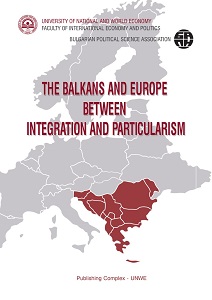European Energy Policy After Brexit: Possibilities and Challenges
European Energy Policy After Brexit: Possibilities and Challenges
Author(s): Ivan-Petar Yovchev
Subject(s): Politics / Political Sciences, Politics, EU-Approach / EU-Accession / EU-Development, Geopolitics
Published by: Университет за национално и световно стопанство (УНСС)
Keywords: Brexit; European Energy policy; European Union; United Kingdom
Summary/Abstract: The aim of this paper is to explore the different possibilities and challenges that willappear for the European Energy Policy after the United Kingdom leaves the European Union(Brexit). Although this can be done regarding the whole of EU policy-making, the paper will focusspecifically on the energy sector. The reasoning behind this choice is related to the importancegiven to the energy sector by the EU and the prominent role that the United Kingdom has playedin the development of this European policy field. The analysis will focus on establishing what willbe the new challenges and opportunities, as well as the key determinants, for the future of the policy in an EU-27 scenario.The paper explores the current status of the decision-making process in the energy sector byfocusing on the key legislative and policy documents, key energy statistics and key actors. Afterthat, three scenarios are formulated – best-case scenario, no-change scenario and worst-case scenario. The three scenarios allow for the identification of the major determinants and the possiblechallenges and opportunities for the future of the European Energy Policy. It is concluded that themajor determinants of the development of the EEP can be found in the outcome of the "Clean Energy Package for all Europeans"; the positions of the member-states from Eastern Europe in thearea of sustainable development; the development of R&D in sustainable technology and the influence of NGOs in the future policy-making process. Based on these core determinants, the challenges and opportunities for the policy are formulated.
Book: The Balkans and Europe between Integration and Particularism
- Page Range: 69-82
- Page Count: 13
- Publication Year: 2019
- Language: English
- Content File-PDF

